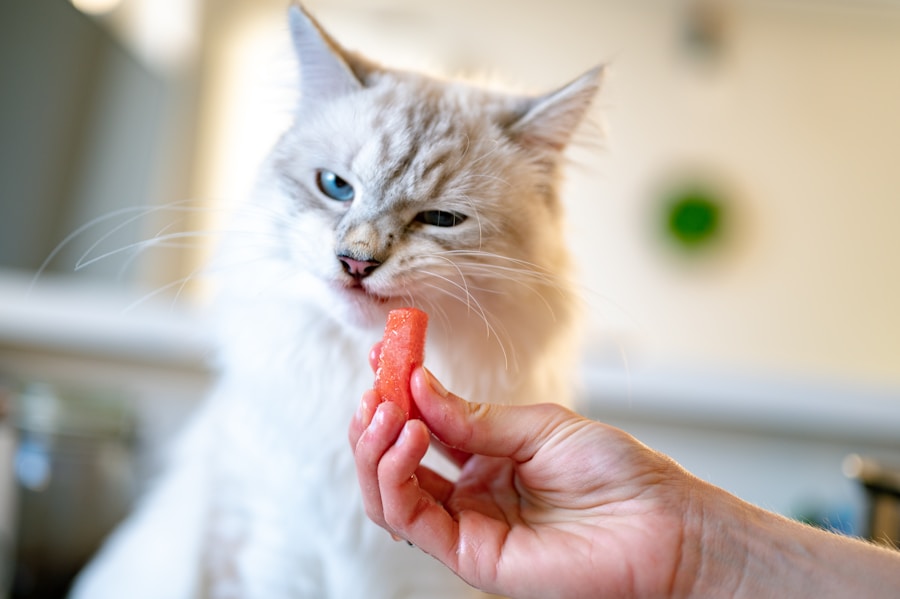When it comes to caring for your new kitten, one of the most important aspects to consider is their nutritional needs. Kittens have specific dietary requirements that differ from adult cats, as they are in a crucial stage of growth and development. It’s essential to provide them with a balanced diet that supports their overall health and well-being. Kittens require a higher amount of protein, fat, and essential nutrients such as calcium, phosphorus, and vitamins to support their rapid growth and development. Additionally, they need a diet that is easily digestible and provides them with the energy they need to be active and playful. Understanding your kitten’s nutritional needs is the first step in ensuring they grow into healthy and happy adult cats.
In addition to the specific nutrients kittens require, it’s important to consider the frequency and portion size of their meals. Kittens have smaller stomachs and higher energy needs compared to adult cats, so they may require more frequent feeding throughout the day. It’s recommended to feed kittens three to four times a day to ensure they are getting enough nutrients and energy to support their growth. Portion control is also important to prevent overfeeding, which can lead to obesity and other health issues later in life. By understanding your kitten’s nutritional needs and feeding them a balanced diet, you can set them up for a lifetime of good health.
The Importance of High-Quality Ingredients in Kitten Food
When choosing a kitten food, it’s crucial to prioritize high-quality ingredients that provide the essential nutrients your kitten needs to thrive. High-quality ingredients are those that are easily digestible and provide a good balance of protein, fat, and essential nutrients. Look for kitten food that lists a high-quality protein source, such as chicken, turkey, or fish, as the first ingredient. Protein is essential for muscle development and overall growth in kittens. Additionally, high-quality fats from sources like chicken fat or fish oil provide essential fatty acids that support healthy skin and coat development.
In addition to protein and fat, high-quality kitten food should also contain essential vitamins and minerals such as calcium, phosphorus, and taurine. These nutrients are crucial for bone development, heart health, and overall growth in kittens. Avoid kitten foods that contain artificial colors, flavors, or preservatives, as these additives can be harmful to your kitten’s health. By prioritizing high-quality ingredients in your kitten’s food, you can ensure they are getting the essential nutrients they need to grow into healthy adult cats.
Wet vs. Dry Kitten Food: Which is Best for Your Feline Friend?
When it comes to choosing between wet and dry kitten food, there are several factors to consider to determine which option is best for your feline friend. Both wet and dry kitten food have their own set of advantages and disadvantages, so it’s important to weigh the pros and cons of each before making a decision. Wet kitten food typically has a higher moisture content, which can help keep your kitten hydrated and prevent urinary tract issues. It also tends to be more palatable for picky eaters and can be easier for kittens to chew, especially if they are teething.
On the other hand, dry kitten food is convenient and cost-effective, as it can be left out for free-feeding without spoiling. It also helps promote dental health by reducing plaque and tartar buildup. However, it’s important to note that some dry kitten foods may contain higher levels of carbohydrates and fillers, which may not be ideal for your kitten’s nutritional needs. Ultimately, the best option for your feline friend will depend on their individual preferences and dietary requirements. Some owners may choose to feed a combination of wet and dry kitten food to provide their kitten with the benefits of both options.
How to Transition Your Kitten to a New Diet
If you’re considering transitioning your kitten to a new diet, it’s important to do so gradually to prevent digestive upset and ensure a smooth transition. Sudden changes in diet can lead to gastrointestinal issues such as diarrhea or vomiting, so it’s best to introduce new foods slowly over the course of 7-10 days. Start by mixing a small amount of the new food with their current food, gradually increasing the proportion of the new food each day until they are fully transitioned. This gradual approach allows your kitten’s digestive system to adjust to the new diet without causing any discomfort.
It’s also important to monitor your kitten’s behavior and stool during the transition period to ensure they are adjusting well to the new diet. If you notice any signs of digestive upset or reluctance to eat the new food, slow down the transition process or consult with your veterinarian for guidance. Additionally, be mindful of any allergies or sensitivities your kitten may have when introducing new foods. By taking a gradual and cautious approach to transitioning your kitten to a new diet, you can help them adjust comfortably and ensure they continue to receive the essential nutrients they need for growth and development.
Common Allergens and Fillers to Avoid in Kitten Food
When selecting a kitten food, it’s important to be mindful of common allergens and fillers that may be harmful to your feline friend’s health. Some kittens may have sensitivities or allergies to certain ingredients commonly found in commercial pet foods, such as grains, soy, dairy, or artificial additives. These allergens can cause digestive upset, skin issues, or other health problems in sensitive kittens. It’s best to choose kitten food that is free from common allergens and fillers, or opt for limited-ingredient diets if your kitten has known sensitivities.
In addition to allergens, it’s important to avoid fillers such as corn, wheat, and soy in your kitten’s food. These ingredients are often used as cheap fillers in commercial pet foods but provide little nutritional value for your kitten. Instead, prioritize high-quality protein sources, healthy fats, and essential vitamins and minerals in your kitten’s food. By avoiding common allergens and fillers in your kitten’s food, you can help prevent potential health issues and ensure they are receiving a balanced and nutritious diet.
Tips for Picky Eaters: Encouraging Your Kitten to Eat
If you have a picky eater on your hands, encouraging your kitten to eat can be a challenging task. However, there are several strategies you can try to entice them to eat and ensure they are getting the nutrients they need for growth and development. One approach is to offer a variety of textures and flavors in their food to see what they prefer. Some kittens may prefer wet food over dry food, while others may have specific preferences for certain protein sources or textures.
Another tip for picky eaters is to establish a regular feeding schedule and avoid free-feeding throughout the day. By offering meals at consistent times each day, you can help regulate your kitten’s appetite and encourage them to eat when food is available. Additionally, try using interactive feeders or puzzle toys to make mealtime more engaging for your kitten. These toys can stimulate their natural hunting instincts and make mealtime more enjoyable. If your kitten continues to be a picky eater despite trying these strategies, consult with your veterinarian for further guidance on how to address their eating habits.
The Best Kitten Food Brands: Reviews and Recommendations
When it comes to choosing the best kitten food for your feline friend, there are several reputable brands that offer high-quality options tailored to kittens’ specific nutritional needs. Some popular brands known for their quality ingredients and balanced formulas include Royal Canin, Hill’s Science Diet, Blue Buffalo, Wellness Core, and Orijen. These brands offer a variety of options such as dry kibble, wet food, and freeze-dried or raw diets that cater to different preferences and dietary requirements.
It’s important to consider factors such as ingredient quality, protein content, fat content, and essential nutrients when selecting a kitten food brand. Look for options that prioritize high-quality protein sources as the first ingredient and avoid artificial additives or fillers that provide little nutritional value. Additionally, consider your kitten’s individual needs such as any allergies or sensitivities when choosing a brand that best suits them. Reading reviews from other pet owners and consulting with your veterinarian can also provide valuable insight into the best kitten food brands available on the market.
In conclusion, understanding your kitten’s nutritional needs is crucial for providing them with a balanced diet that supports their growth and development. Prioritizing high-quality ingredients in their food ensures they receive essential nutrients without harmful additives or fillers. When choosing between wet and dry kitten food, consider factors such as moisture content, palatability, and dental health benefits. Transitioning your kitten to a new diet should be done gradually to prevent digestive upset, while avoiding common allergens and fillers helps maintain their overall health. Encouraging picky eaters with varied textures and flavors can make mealtime more enjoyable for them while ensuring they receive the nutrients they need. Finally, selecting the best kitten food brands involves considering ingredient quality, protein content, essential nutrients, and individual dietary requirements. By prioritizing your kitten’s nutritional needs and selecting high-quality food options, you can set them up for a lifetime of good health and well-being.





